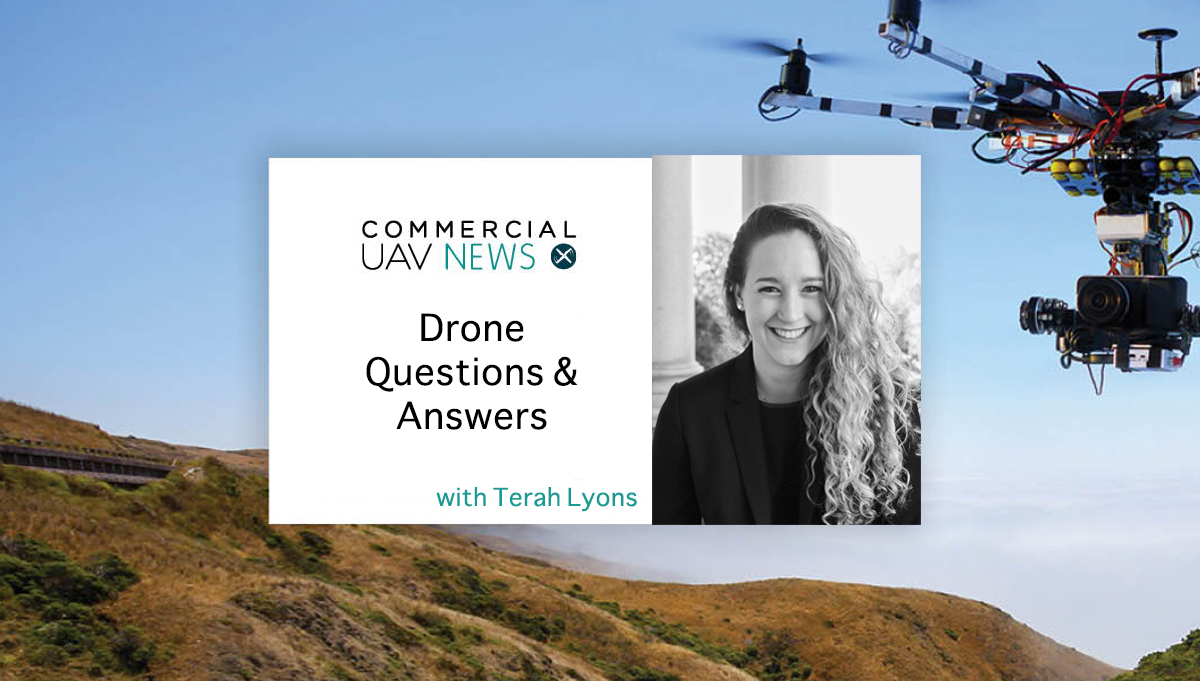The FAA has received the majority of the attention from everyone with an interest in operating a drone for commercial purposes, and the release of Part 107 illustrates why so many are focused on that agency. However, various other departments within the federal government have taken a keen interest in the development of UAV technology, and that goes from the National Aeronautics and Space Administration (NASA) to the National Oceanic and Atmospheric Administration (NOAA) and all the way up to the White House.
The extent of that interest was on full display in the recent announcement from the White House Office of Science and Technology Policy (OSTP) around their new steps to promote the safe integration and adoption of UAVs across the United States. The Administration’s support of the technology in terms of funding and enthusiasm for the practical application of UAVs showcases a commitment to seeing this safe integration in both the public and private sector.Representatives from both NASA and NOAA are set to speak at the upcoming Commercial UAV Expo, and it will be great to discuss what this news means to their agencies at the event. In the meantime, Terah Lyons, Policy Advisor to the U.S. Chief Technology Officer in the White House Office of Science and Technology Policy, was kind enough to talk through some of the essential details from her perspective within the Executive Office of the President. Jeremiah Karpowicz: Can you tell us about some of the groundwork that went into this announcement? How long have you been working on it?Terah Lyons: The series of announcements released on August 4th in conjunction with the OSTP Workshop on Drones and the Future of Aviation was part of a policy work stream related to the integration of the US airspace system that the government has been leading, and is something we've worked on with the FAA and Department of Transportation (DOT) since the very outset of the Administration. The August event was a real marker of progress in terms of the work we’ve been doing around airspace integration and the research and development of unmanned aircraft systems.The announcements that several Federal agencies and departments made are meaningful developments in government research efforts around unmanned systems. These R&D efforts are especially significant coupled with the growth of U.S. government users of unmanned aircraft systems, as in the case of the work of the Department of the Interior (DOI) and the National Oceanic and Atmospheric Administration (NOAA), both of whom made announcements. Those agencies, and several others, have been looking at using UAS to execute their mission operations for a while, and have recently been scaling up those efforts. This happened to coincide with the work we were doing around the OSTP co-hosted drones workshop on the 4th of August, so it was a good time for these agencies to use that event as a platform to unveil some of the projects they've been working on. Can you talk about why these various agencies have taken such an interest in the technology?There's a convergence happening across the federal government in the use of these vehicles as a platform technology. Various departments and agencies are using these systems to get work done and to advance agency department and missions. They’re being used to help make the government more efficient, more effective, and to save taxpayer dollars and even lives.Growing public and private use of UAS makes it increasingly important for government regulators to pay special attention to the need for data to inform evidence driven policy-making in this arena. For that reason, it’s critical to have the government investing directly in research and development. It’s also important for us to generate data in the context of governmental use and cross-sector partnerships to ensure that we have the type of information that we need to go about making smart policy decisions. So these agencies are actively collaborating with each other?Absolutely. One thing the Federal Government has done a great job of is cultivating a cross-agency community of practice to try to share best practices, data, and platforms, and to more effectively propagate information around how to develop civil unmanned aircraft systems programs in a systematic and intelligent way. The interagency conversation been useful for regulating agencies, user agencies, and research and development agencies alike, because this type of information-sharing enables us to better focus priorities and to learn lessons from other government actors using vehicles out in the field to gather data or run missions that help extend the precedent of safe operation. The Federal Government is generating significant value and perspectives from these types of relationships and exchanges. It’s clear from this announcement that safety is a huge priority, but I often see people refer to the term in a very abstract way. Can you talk about what “safety” means in the context of this initiative?Safety is the number one priority of both government and industry in integration. It is the highest priority of the FAA and it's something that informs all of the work that the government is doing around this issue. The National Airspace System (NAS) has a very high safety standard—and rightfully so. When passengers get on a commercial airplane they fully expect to safely get off that plane on the other side of their journey. That safety standard is something the FAA is doing their utmost to preserve through the process of integrating the NAS, for all of our safety.In concrete terms, the approach around safety and how we define it is extremely scientific, and currently enables the safe execution of an average of 50,000 manned flights in the NAS every day. The chartering of the FAA’s recently-announced UAS Safety Team is part of a broader effort to address safety issues related to the increasing number of unmanned aircraft system operations in U.S. airspace, and is one aspect of a complex safety program governed by rules and standards affecting vehicles, operators, air traffic management, and more.Another aspect of work that is really worth highlighting is the deep and meaningful engagement of the Federal Government with the UAS industry throughout the integration process. The cultivation of performance-based standards as well as what pilot certification and vehicle operational standards should be is something the government been doing in lock-step with industry collaborators, both within the formal context of the rulemaking process and via other channels. That's been a very important tool in the policy process in terms of making decisions around technology capabilities, regulation, and public appetite around integration, and we hope it will continue. The collaboration with industry partners really is something important to highlight, because people on both sides of the issue have a vested interest in ensuring the skies are a safe place to fly, don’t they?We've worked extensively with the industry on the safety issue. I think that many people in the aviation community learned very early on that the unmanned industry shares the same priorities as the incumbent aviation community on this front. Safety truly is a priority factor in the decision-making calculus of technologists interested in bringing something like a UAS platform to market, just as it is a priority factor in those working on integration. There’s a balance to be struck in ensuring public safety and room for innovation and development. That balance is challenging, as it is with most emergent technology, but entirely possible. You mentioned the research details earlier, which seems especially relevant because so many people are struggling with basic questions around how to best take advantage of the technology. Will this have an impact on the projected economic and job creation developments the release quotes? Fundamental research is the bread and butter around how we make decisions about technology, safety, and control. It guides how we regulate different aspects of technology and certainly how we go about developing platforms that will actually help us do our jobs more efficiently. And ultimately, R&D will surely influence the speed and capability of integration efforts and thusly the industry that relies on this work. The FAA’s research, engineering, and development budget dedicated to the safe integration of UAS in the NAS is limited—less than $10 million in FY16. The NSF R&D funding announced this August (you can read the NSF Dear Colleague letter here: https://www.nsf.gov/pubs/2016/nsf16123/nsf16123.jsp) helps supplement this, as does energy and funding from agencies like NASA, which is also doing important work on UAS and airspace integration research and development. It is fantastic to see the federal community come together and be able to apply resources to positive UAS applications and integration in this way. It’s great to see that the DOI is looking to utilize drones for a broad range of actions, especially for search and rescue. Based on how involved those initiatives are, it seems like this technology is something they’ve been looking at for awhile.It is really incredible what the Federal Government itself is doing with drones in a civil context. Because of the nature of the early regulatory regime, it was actually public operators, in many cases, who had the most running room to apply for exemptions that allowed for interesting pilots of applications in different operational contexts by the government.Because of that, DOI was ahead of the game in terms of trying to figure out how to use drones for good, and to use them to advance agency in department missions across the spectrum of operations. They’ve used refurbished surplus military vehicles procured at no cost for land survey and environmental monitoring, and have expanded their program over the past many years to include all manner of vehicles and applications. Their stories of early UAS innovation are remarkable, and now they are in the process of developing out programs that provide tremendous cost savings and enable new operations above and beyond what they could otherwise accomplish without unmanned systems. The full extent of their operations is quite extensive, and not limited only to what was announced in the OSTP Fact Sheet in August. The announcement mentions that NASA and the NOAA have committed to specific actions around this initiative, and representatives from both administrations are set to be at the Commercial UAV Expo. What sorts of insights do you expect they’ll be able to share with attendees around these commitments? NOAA and NASA are doing some remarkable things in very diverse corners of the UAS universe.NASA’s research has been truly fundamental in helping us to figure out how full integration of the airspace might take place. They’ve been conducting research on low altitude airspace management through the Unmanned Aircraft Systems Traffic Management (UTM) research program, as well as on systems-level integration capabilities, through which they provide research findings to reduce technical barriers associated with integrating UAS into the NAS. NASA’s work has been a genuine exercise in meaningful collaboration, as they have also heavily involved outside stakeholders in the work that they have conducted on integration; it is always exciting to hear more about the work they’re developing.NOAA’s mission is, in part, to understand and predict changes in climate, weather, oceans and coasts, share knowledge and information, and conserve the environment. They have an extremely well-developed UAS program to help them achieve these ends, and are using drones for environmental monitoring and remote survey, as well as some high-impact research on extreme weather systems and hurricane monitoring. It will be beneficial to watch these positive UAS programs and others like them across the Federal Government grow.Subscribe
The information you submit will be stored and used to communicate with you about your interest in Commercial UAV News. To understand more about how we use and store information, please refer to our privacy policy.
August 30, 2016
The White House, NOAA and NASA are Focused on the Safe Integration of Drones into U.S. Airspace
















Comments